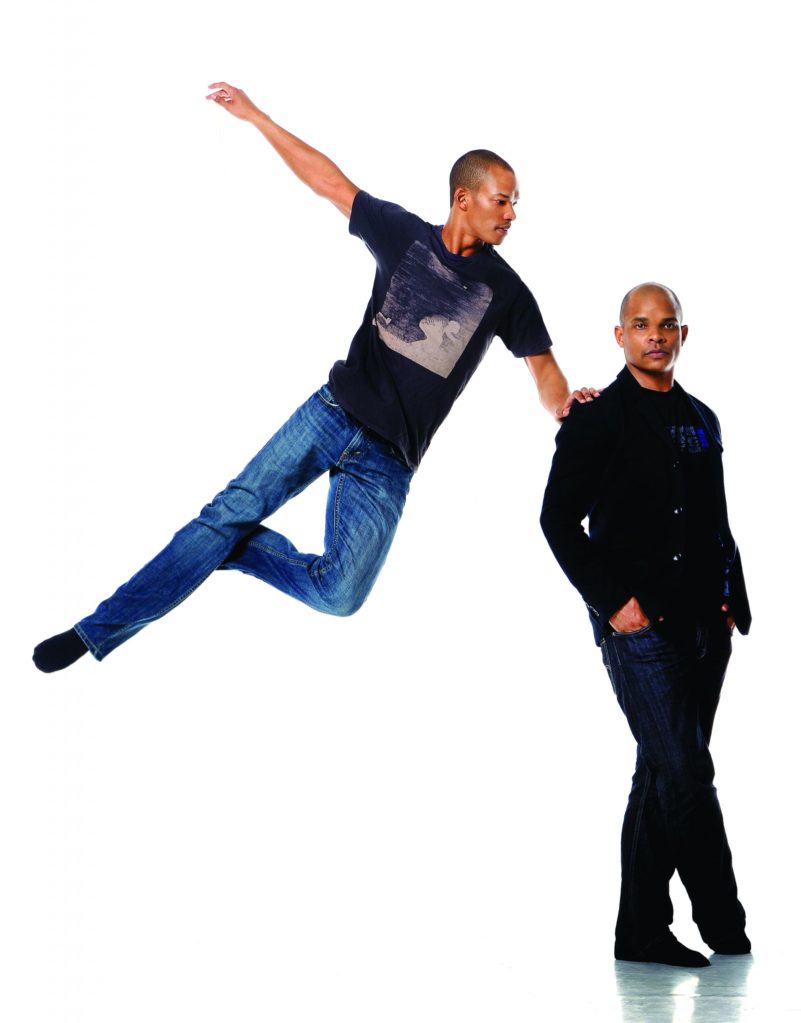When Warren Adams danced his way through his first ballet class, he had little idea he would one day perform on the most prestigious stages on earth. Like Billy Elliot, he would pirouette his way through adversity to a professional career in ballet.
Adams grew up in a township in East London, South Africa, and like most boys his age, preferred sport to dancing.

Warren Adams (age 10, 1986) Greenpoint Stadium, Cape Town at the International Highland Festival
“I was six years old attending my first year of primary school. A woman called Gwen-Mary Wells came by and asked us who wanted to do ballet. A pretty girl in the class put up her hand, so my three buddies and I decided to do the same. They gave us these forms to give to our parents for their signatures, but my three friends’ parents declined to give their approval stating that ballet was only for girls. My parents did not object and a few weeks later my dad took me to my first ballet class,” says Adams.
He says that although his parents knew what ballet was, they had no idea how tough the road would be for their son.
“Society perceived it as an effeminate art form, so as a result I faced plenty of verbal abuse. However, for every negative word thrown at me, I received 100 words of encouragement from family, friends and strangers. My school friends would pick me up at ballet, and we would run to the track, tennis court or soccer field. I was a competitor, and they loved that. Dance was just something I happened to do.”
Decades later Adams is traveling the world as a sought-after ballet dancer and choreographer; right now, he is co-choreographing the Broadway production Motown: The Musical. It is the tale of the iconic record label founded by music mogul Berry Gordy Jr. in 1960 that nurtured musical greats, from Diana Ross to Marvin Gaye.
The show has a cast of 40 dancers, singers and actors and grossed more than $1.03 million on Broadway in a mere seven days of previews.
“Normally, when researching such a prolific story, I would have to use Google, YouTube or books. However, every day I can simply turn to Berry Gordy, the founder of Motown and ask him specific questions about Michael Jackson, Marvin Gaye, Stevie Wonder, The Temptations, The Tops, Smokey Robinson, The Supremes and more,” Adams says.

NEW YORK, NY – APRIL 14: Warren Adams attends the Broadway opening night for “Motown: The Musical” at Lunt-Fontanne Theatre on April 14, 2013 in New York City. (Photo by Neilson Barnard/Getty Images)
He went to great lengths to impress the show’s musical director by insisting on doing a live presentation of one of the songs from the show as part of his audition.
“He liked my idea a lot and suggested I do the iconic ‘Dancing in the Street’. I hired several performers and a week later I did my presentation and the rest, as the saying goes, is history,” says Adams.
The show opened in April.
Glitz and glamor is nothing new to Adams. He has worked on other big productions such as The Lion King and choreographed for several theatre companies, Disney, operas, film and television.
Adams was the first recipient of the Mandela/Sainsbury scholarship to study ballet in London. While ballet led to his current career, he found that it restricted his creativity as an artist.
“By the age of 21, I became frustrated with my situation in the UK. I felt like artists were being boxed into a specific genre without having the ability to explore other art, dance or theater freely. New York City intrigued me because American artists were taking greater risks.New York City allows me to work in dance, theater, opera, film and TV as a director, choreographer and dancer. I am also a Professor at New York University and Princeton University in the Theater Department,” he says.
Adams has not forgotten his roots though and goes back to South Africa, with his younger brother who is also a dancer, to work with up-and-coming students of dance.
“South African dance has always maintained a great standard, particularly the European genres like classical ballet. Post-apartheid was a challenging time, because choreographers wanted to have their own voice, and not just regurgitate works by American and European artists. I believe these artists have been very successful in accomplishing this. The biggest challenge the dance community faces is the lack of funding to arts organizations,” he says.
South Africa and the rest of the continent have a talented pool of dancers, who have, as he puts it, found their own voices. But many more are forced to leave the country to find work, and African stages seldom play host to big productions of the continent’s own tales.
“It’s not because of a lack of creativity on the artists’ part. It has to do with economics. Big productions require big audiences to cover costs and to provide profits for producers. New York City had 51 million visitors in 2012 and that is one of the main reasons why Broadway can produce 20 new multimillion productions each year. Big productions can be done in Africa, but the longevity of a production run can never be guaranteed,” says Adams.
